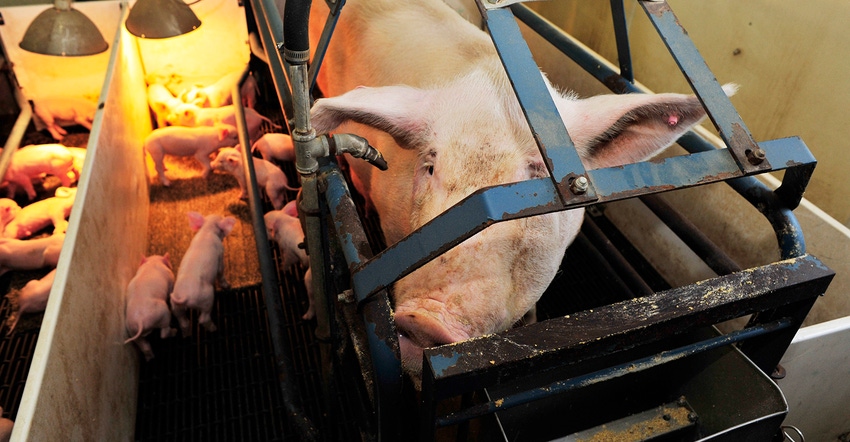JEV outbreak could carry $600M price tag for U.S. pork industry
Study estimates 32% of the U.S. sow herd would be at-risk for infection, sow herd losses would range from 1-2% of production.
March 15, 2024

In early 2022, Japanese encephalitis virus expanded into new regions of Australia, affecting over 80 swine breeding farms and causing significant production losses. Having never been detected in swine in the U.S., JEV poses an emerging transboundary threat to domestic sow herds susceptible to viral infection.
As part of industry preparedness activities for JEV, SHIC funded an economic assessment to explore the potential impacts for introduction and establishment of JEV in the U.S. Liz Wagstrom, Wagstrom Consulting, led the investigation, alongside a team of economists and production veterinarians, to gather production data during the Australian outbreak and develop a prediction for production losses due to reproductive outcomes during a potential U.S. incursion.
Now complete, the full domestic JEV incursion economic assessment white paper can be accessed here. Authors estimated that 32% of the U.S. sow herd would be at-risk for JEV infection and that resulting sow herd losses would range from 1-2% of production. Assuming no increase in prices due to the diminished output, economic losses to the U.S. pork industry would be between $306 million and $612 million. While the study did not assess the impact on boar studs or changes in demand for pork and pork products, the predicted production impact for U.S. swine herds supports the need for continued JEV prevention and preparedness activities.
The 2022 outbreak of JEV genotype IV spread rapidly across new geographic regions in Australia affecting breeding swine herds and causing reproductive failure, delayed farrowing, stillbirths, mummified fetuses, abortions and weak shaker piglets. Additional clinical signs were noted for infected boar studs including orchitis, decreased sperm number (in some cases progressing to semen with no sperm) or motility in semen, and abnormal spermatozoa.
Between February 25 and March 3, 2022, JEV infection in pigs was confirmed in four Australian states. By mid-2022, more than 80 pig farms located over much of the southern and eastern parts of Australia were infected. Since the last identified JEV infection in Australian swine was in a single gilt in November 2022, no additional JEV infections in Australian domestic swine have been identified during 2023 – 2024. Through interviews with Australian veterinarians and analysis of production data, it was estimated that approximately 60% of Australia’s sow herds were impacted with overall production losses ranging from 3% – 6%.
As part of the economic assessment for a potential JEV incursion to the U.S., the investigative team evaluated differences between the U.S. and Australian pork industries. Compared to the U.S. inventory of 72.2 million swine on over 60,000 farms, the Australian pig industry is smaller with an inventory of 2.4 million swine on 4,300 piggeries.
Further, farm ventilation type was compared as it had been previously hypothesized as a risk factor for infection during the Australian outbreak. Australian veterinarians estimated that of the 90% of sows raised in indoor confinement, only 10% are housed in mechanically ventilated facilities. This contrasts with U.S. sow herds predominantly raised in mechanically ventilated facilities including filtered barns, which are believed to have lowered risk for mosquito exposure. For U.S. herds, ventilation type varies by production region and was considered when assessing overall percentage of sows impacted by a potential JEV incursion.
The total estimated number of sows predicted to be impacted in the U.S. was 2,135,940, which is equal to 32% of the total U.S. breeding herd. As affected farms in Australia experienced a 3% – 6% reduction in annual output, applying the same 3% – 6% value across the number of impacted U.S. sows suggests a reduction in overall U.S. production output of 1% – 2%. Cash receipts for the U.S. pork industry totaled $30.6 billion in 2022. This suggests that the economic losses in impacted herds would be between $306 million – 612 million in a 1-year outbreak scenario. For a 2,500 head sow farm that had achieved 30 weaned pigs per sow per year prior to the outbreak and assuming each weaned pig is worth $40, the production losses amount to $90,000 – $180,000 per year.
Understanding the potential economic impacts of JEV on pork production in the U.S. is critical to protecting the health of the U.S. swine herd as well as mitigating the risk of this emerging disease. While certain production losses were not assessed, including impact on trade or boar stud output, the information gained in the report illustrates the potential negative impact for U.S. pork production on sow farms.
This economic estimate supports the need for research to understand the dynamics of disease transmission and the development of strategies for prevention and control. Critical research investments continue to be necessary to prevent JEV incursion, ensure rapid detection of JEV if introduced, inform stakeholder response, mitigate production losses on sow farms, identify effective control measures, and develop clear messaging to consumers on the safety of pork.
You May Also Like



